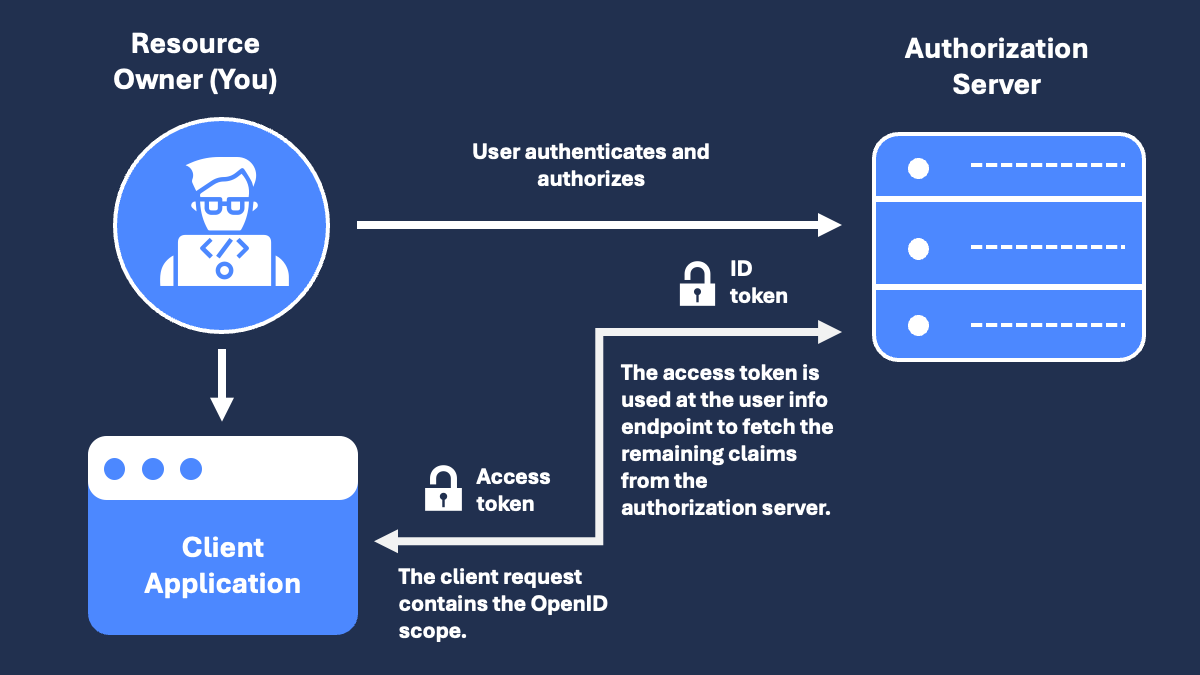OpenID Connect as a Digital Identity Solution
As part of digitalization, small and medium-sized businesses also face significant challenges. One of these tasks is to create digital access and data management solutions. Even in smaller companies, employees or external users today need to access many different applications. Handling this securely yet comfortably is no easy task. However, with OpenID Connect, data-sensitive and easy-to-use identity management is easy. Below, you will learn what exactly OIDC is and how it can be used profitably in your company.

What is OIDC?
OIDC was developed by the OpenID Foundation, which includes many large companies, including Google. The goal of the tool is relatively simple: It enables users to log in to various services with a central login. This provides companies with a central identity and user management system that allows users to switch between their applications with maximum convenience: they no longer have to enter their login credentials every time, as they are queried centrally. As a Single Sign-On service, OpenID Connect aims not only at authorizing the persons logging in but also at authentication and identification. The OpenID Connect service is also expandable. For example, identity data can also be securely encrypted, which is a great advantage in terms of data protection.
Ultimately, it is a Single Sign-On service that can significantly simplify the work for both users and companies. In the course of digitalizing their offerings, more and more smaller companies are also turning to OIDC.
How does OpenID Connect work?
The OpenID Connect identity protocol is based on the OAuth 2.0 framework. However, it is an evolution of this framework that brings additional usage possibilities. While OAuth 2.0 is only intended for authorization to access protected resources, the OpenID Connect service also enables user authentication and the use of all retrievable data for logging into various services. Technically, this is made possible because OIDC works with ID tokens (JSON Web Tokens), while OAuth 2.0 relies on pure access tokens.
Specifically, the technical implementation looks as follows: End users navigate to a website or app and log in there with a username and password. In the background, the OpenID Connect process then starts. The client sends a request with the entered data to the OpenID provider after clicking a button. The provider compares the transmitted data with those stored in the central database. This way, the person logging in can be identified and authorized. For this purpose, the provider responds with an identity and access token. The client then enables access. Additionally, the provider makes further application-specific information about the person logging in available through the so-called UserInfo endpoint. This can include, for example, the email address, stored names, or similar data. This allows users to log in to different services with the stored data without having to enter or transmit everything anew each time. Ultimately, in the background, there is not only authorization like with OAuth 2.0 but also identity verification or full authentication.
Why is using OpenID Connect important?
Using OpenID Connect as a digital identity and management solution is important for several reasons. The service enables companies to centrally manage stored user data, while providing users with a good user experience by simplifying login processes across multiple services. The simple technical solution thus combines advantages on both sides with high security. Such a connection cannot be ensured without central identity and data management.
What are the advantages of OpenID Connect for businesses?
The biggest advantages of using OpenID Connect in the business context are evident. The Single Sign-On stands out: Users can authenticate once to seamlessly access multiple services. This ultimately saves valuable time and also reduces password management tasks, thereby reducing security risks. Additionally, OIDC provides a simple solution for user data management. This ensures that only authenticated users can access protected data. OpenID Connect scores with the use of the latest security standards. As already mentioned, it is an evolution of the OAuth 2.0 standard, which also uses JSON Web Tokens. OpenID Connect is widely used and based on open standards such as protocols. This ensures interoperability with various identity providers and applications.
For small and medium-sized businesses, the OpenID Connect service is the ideal solution for identity management or user data management. It can be implemented without much effort, reduces user effort, secures sensitive data, and is widely usable. Compared to more complex protocols like SAML 2.0, it offers several advantages. Moreover, it is particularly suitable for use with mobile apps.
Register at UNIDY
If you also want to use OIDC in your company, it is essential to follow some best practices. It is crucial to choose a reliable OpenID provider and ensure high security standards during implementation. Relevant factors include HTTPS usage, ID token validation, the use of nonce values, or limiting the validity period of ID tokens.
UNIDY offers you the opportunity to use the OpenID Connect service securely and reliably and provides the necessary technical infrastructure with high security standards. Register now at UNIDY and enjoy the benefits of OIDC!
HSV.ID: How Hamburger SV Built 500,000+ Activatable Fan Profiles with Centralized Identity
Hamburger SV (HSV) faced a challenge familiar to many major sports and entertainment organizations: massive digital reach without data ownership. With nearly 700,000 social media followers, the club had strong engagement, but the critical first-party fan data was locked away in silos and controlled by third-party platforms.
The rise of Passkeys as the next generation authentication method
For users, logging in to services and logging into their account online is part of everyday life. For a long time, this required traditional passwords, which are considered insecure and cumbersome. Passkeys are an alternative that simplifies many things and offers numerous advantages in everyday use for both users and companies or organizations.